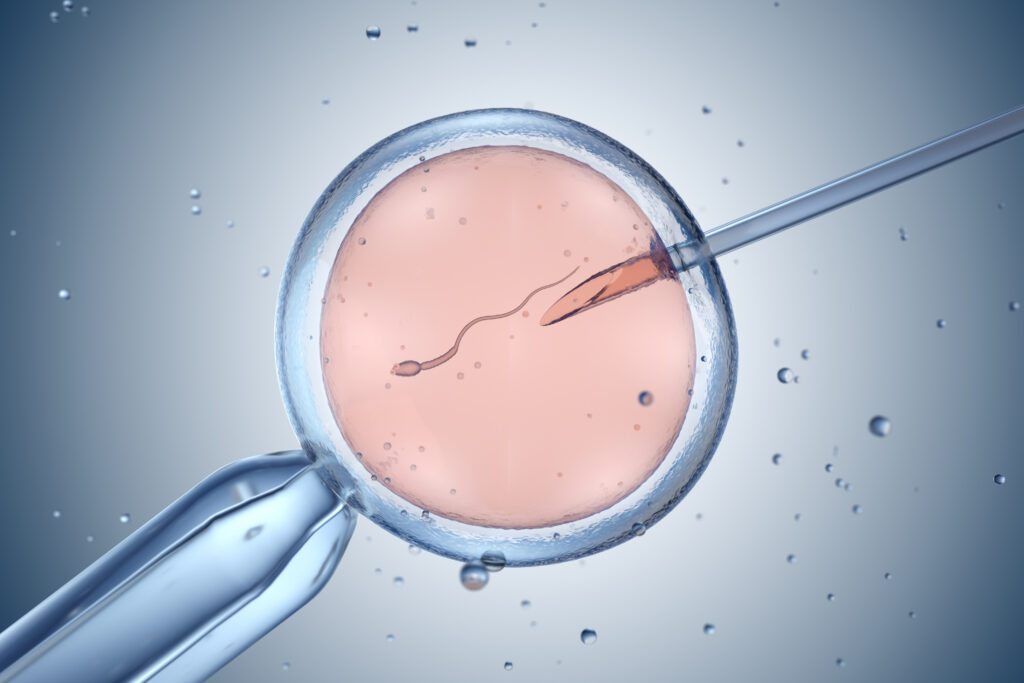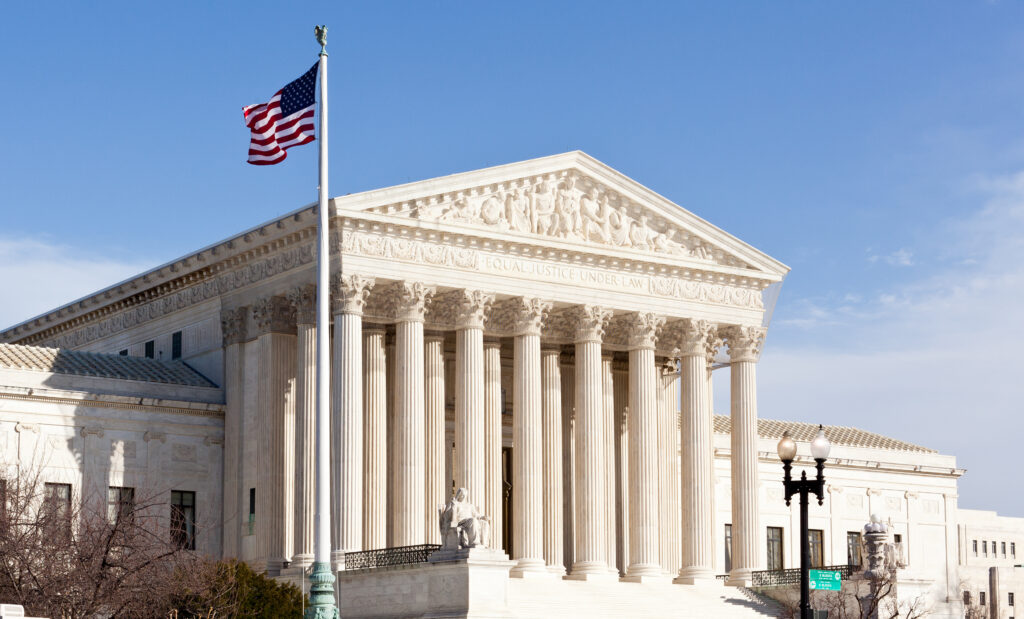Three Life Policies that Challenge Supreme Court Abortion Standards

Thomas M. Messner serves as Senior Legal Fellow at the Charlotte Lozier Institute, a pro-life think tank located in Washington, D.C. These remarks were prepared for an address Mr. Messner delivered at Georgetown University Law Center at a February 19, 2016 event sponsored by Life Lawyers, a pro-life student organization at the university. CLI publishes the prepared text here as especially timely given recent remarks at the undergraduate University by Cecile Richards, President of the Planned Parenthood Federation of America.
Today I’m going to talk about three legal policies involving life protections for unborn children. I’m going to explain how each of these policies could actually be upheld under current Supreme Court abortion precedent. However, at the same time, each of these policies represents a serious challenge to current Supreme Court abortion standards by forcing the Court to consider and, hopefully, uphold policies that narrow the abortion right and call into question its continued legitimacy. But first, let’s step back and consider three basic points that help us put pro-life legislative initiatives into context.
Social Context of Life Policy Initiatives
First, the abortion issue is both easy and hard. It’s hard because unplanned pregnancies, and sometimes even planned pregnancies, can present very difficult issues in the lives of real people. Abortion is not first a legal issue, it’s a human issue, and in many cases pregnancy is a genuine crisis and life-changing event for people. On the other hand, even acknowledging these hard situations, we can also say that the abortion issue is easy in the sense that if you believe the unborn child is a human being, then we can’t think of any situation—even very hard cases—where it’s morally permissible to intentionally take the life of that child, of that innocent human being.
Second, and related to this first point, of almost any legal issue we could discuss, it’s hard to find one that is so closely and directly tied to the fundamental moral analysis of the same issue. The moral analysis of abortion is that if the unborn child is a human being, then we can’t think of any situation—even very hard cases—where it’s morally permissible to intentionally take the life of that child, of that innocent human being. It’s that simple. When we’re talking about life outside the womb, I think we’d probably be pretty hard pressed to find any example where the law did not very closely track basic moral analysis including the elements of act, intent, and circumstance.
Third, for both of these reasons, the abortion issue is not going away anytime soon, and it will never go away until society reaches a consensus that the unborn child is a human being that deserves the same legal protection of life as any other human being. As law students, it’s easy to get lost in the textbooks, in the library stacks, in the busy demands of a law school schedule. It’s easy to forget that sometimes the decisions you read in the textbooks have immense social consequences. But we were reminded of that reality in a powerful way just weeks ago on January 22. I’m sure you all remember if for no other reason than you got a snow day from law school. That was the Friday that the blizzard hit. That day was also the forty-third anniversary of Roe v. Wade – the case that imposed a federal constitutional right to abortion on demand. And despite the impending blizzard, a significant number of people nevertheless made their way to D.C. to march in protest of the Roe decision. People have been demonstrating against Roe every year since 1973 and will continue to protest until, at a minimum, the Supreme Court decides that the people, through direct vote and through representative legislating, should be able to decide the abortion standard for themselves. Our unelected justices on the Supreme Court might think they control the abortion issue, and in some real sense they do. But a people who unwaveringly commit to social justice, activism, and prayer will keep the issue live until those justices finally give up and allow for what is right.
Three Life Policies that Challenge Supreme Court Abortion Standards
With these three points in mind, let’s take a look at three issues that illustrate how the law of abortion could continue to develop. One of these issues is the policy that would restrict abortion at 20 weeks of pregnancy on grounds that unborn children can feel pain at that point. These policies are already in effect in several states and I’ll explain why I think the Supreme Court might very well uphold the 20-week rule as constitutional. The second of these issues involves discrimination abortion. Discrimination abortion is when, instead of a person deciding against pregnancy as a general matter, the person decides to terminate the pregnancy based on some particular trait of a particular child. Examples include discrimination abortion based on the race or gender of the child as well as discrimination abortion based on a disability of the child. I’ll explain why policies banning discrimination abortion at any point in pregnancy should survive even under current abortion law created by the Supreme Court. Third, I’ll provide one example of a potential future policy that illustrates how the life advocates may very well continue to challenge the Roe holding in an effort to make the law more life respectful.
Twenty-week abortion bans
The first issue involves policies that restrict abortion at 20 weeks of pregnancy on the grounds that an unborn child can feel pain at that point. The current abortion standard created by the Supreme Court is clear. Until viability, government cannot place an undue burden on the choice to abort the unborn child. This is called the viability rule. Viability can occur at 20 weeks of pregnancy measured from the time of fertilization; however, in the current state of medical technology, viability will occur after the 20-week mark in a very large percentage of cases. Therefore, opponents argue that limiting abortion at 20 weeks to protect pain-capable unborn children violates the viability rule, at least when the restriction applies before viability.
In 2013 the U.S. Court of Appeals for the Ninth Circuit ruled that a state 20-week law was unconstitutional because it violated the viability rule. The U.S. Supreme Court chose not to review that decision. However, there are good reasons to conclude that, if the Court considers a 20-week law in a future case, it would uphold the law.
One way the Court could uphold a 20-week law does not involve overturning any precedent. To understand how this works you have to understand two basic propositions. Let me first say, however, that my discussion of this issue draws very heavily from the work of University of Georgia Law Professor Randy Beck. I quote and cite his work extensively in my paper on this subject and wish to acknowledge my reliance on his work here too.
To understand how the Court could uphold 20-week laws without overturning precedent, you have to understand two propositions. The first proposition comes from the 2007 Gonzales v Carhart case where the Supreme Court upheld the federal partial-birth abortion ban. Professor Beck explains that in Gonzales the Court recognized “a multiplicity of state interests distinct from the interest in protecting the life of any particular fetus.” These interests included promoting respect for human life and protecting the integrity and ethics of the medical profession.
The second proposition comes from the Roe case itself. One way to read Roe is that different durational rules can be applied to different state interests. In Professor Beck’s words, “Roe’s dicta on the duration of abortion rights took the position that the point at which a particular state interest would justify substantial restrictions on abortion depended on the particular state interest in question. Thus, an interest in promoting maternal health justified regulation at the end of the first trimester, when abortion might present a greater risk to the mother’s health than carrying a child to term. The interest in protecting fetal life justified regulation only at viability . . .”
When you combine these two propositions you can see how the Court could uphold a 20-week law without overturning Roe or Casey. First, many 20-week laws identify a new state interest, protecting unborn babies from pain. This is different from the state interest in protecting unborn human life. Second, applying the Roe standard, where different durational rules apply to different state interests, the Court could rule that although viability is the durational rule for laws designed to implement what Professor Beck calls “a purely moral assessment of the value of unborn human life,” 20 weeks is the durational rule for laws designed to protect unborn babies from pain. As Professor Beck explains, “Just as the states could assert the distinct interests recognized in Roe at different points in pregnancy, now that Gonzales permits states to advance previously unrecognized interests in support of abortion regulations, there is no reason all of those interests should be subject to the same durational line.” In Professor Beck’s words, the Court “could appropriately confine” the viability rule “to the state interest the Court designed the rule to cover, a purely moral assessment of the value of unborn human life.”
Under this approach, not only could the Court uphold a 20-week law without abandoning the viability rule, it could do so based on or at least consistent with Roe, the very precedent that created the viability rule. Furthermore, let me briefly note that, because the question has not been decided by the Court, that is to say because the question is one of first impression, even lower courts would be free to reach this conclusion, thus presenting a case for Supreme Court adjudication.
Of course, there is another way the Court could uphold a 20-week ban and that’s by throwing out the viability rule altogether. That would be a good move because the viability rule is unworkable, arbitrary, unjust, poorly reasoned, inadequate, and extreme.
Due to time restrictions I’ll direct you to my paper for most of this analysis. But let me give you just two examples here. First, Professor Beck has argued that viability can be influenced by factors such as race, gender, whether the mother smokes, the altitude of where the baby and mother live, and access to treatment facilities. That makes the viability rule arbitrary and unjust. Second, the viability rule is unworkable as a meaningful regulatory standard due to, in the Supreme Court’s words, “the uncertainty of the viability determination.” Professor Beck discusses the 1979 Colautti v. Franklin case in which the Court acknowledged that “the probability of any particular fetus’ obtaining meaningful life outside the womb can be determined only with difficulty.” Further, “different physicians equate viability with different probabilities of survival, and some physicians refuse to equate viability with any numerical probability at all.” Given these “uncertainties,” it is “not unlikely,” the Court explained, “that experts will disagree over whether a particular fetus in the second trimester has advanced to the stage of viability.” This is a highly uncertain standard for uniformly determining the legal status of unborn children. Furthermore, it’s a difficult if not impossible standard to enforce.
In the time I have remaining let me just briefly outline two additional legal issues that illustrate how the law of life might continue to develop.
Discrimination abortion bans
The first of these issues involves laws that prohibit discrimination abortion. Discrimination abortion is when, instead of a person deciding against pregnancy as a general matter, the person decides to terminate the pregnancy based on some particular trait of a particular child. Examples include discrimination abortion based on the race or gender of the child as well as discrimination abortion based on a disability of the child. Policies protecting against discrimination abortion, mostly gender discrimination, are in place in certain parts of the country.
There are at least two ways the Court could uphold these policies. First, like with 20-week laws, the issue is so far as I know one of first impression, and the Court could rule that its previous abortion rulings were simply not designed to address the state interest in protecting against sex, race, or disability discrimination. With 20-week laws the Court could rule that different durational rules apply to different state interests. With discrimination abortion bans, the Court could rule that the abortion right is a right not to be pregnant, not a right to terminate the pregnancy of a particular child based on a particular trait, especially a protected trait such as race, gender, or disability. In making this argument I want to acknowledge that I draw upon an amicus brief filed on behalf of three disability groups by attorneys from the Bioethics Defense Fund, as discussed in a short piece I coauthored for the Lozier Institute.
That’s one way the Court could uphold a discrimination abortion ban. Another way the Court could uphold a discrimination abortion ban is by ruling that such bans do not constitute an undue burden under the 1992 Planned Parenthood v. Casey standard. In Casey the court ruled that before viability the government may not impose an undue burden on abortion. However, one argument is that banning discrimination abortion does not prohibit abortion and therefore does not place an undue burden on abortion. Rather it prohibits and unduly burdens choosing abortion for discriminatory reasons. Of course you can think of analogies to this reasoning throughout the law where a permitted action, such as the choice of employers to hire and fire employees, is not said to be unduly burdened much less prohibited merely because such action may not be taken based on discriminatory grounds.
Abortion bans in commercial surrogacy
The final policy I want to discuss involves banning abortion except for life of the mother in cases involving commercial surrogacy. I would welcome any contrary information anyone might have, but without researching the question I’m assuming that no such laws currently exist. However, I think such a policy would be good policy and that the Court should uphold such a policy.
Let me read you, just briefly, from the Court’s opinion in Casey. “It should be recognized, moreover, that in some critical respects the abortion decision is of the same character as the decision to use contraception, to which Griswold v. Connecticut, Eisenstadt v. Baird, and Carey v. Population Services International, afford constitutional protection. We have no doubt as to the correctness of those decisions. They support the reasoning in Roe relating to the woman’s liberty because they involve personal decisions concerning not only the meaning of procreation but also human responsibility and respect for it. As with abortion, reasonable people will have differences of opinion about these matters. One view is based on such reverence for the wonder of creation that any pregnancy ought to be welcomed and carried to full term no matter how difficult it will be to provide for the child and ensure its well being. Another is that the inability to provide for the nurture and care of the infant is a cruelty to the child and an anguish to the parent. These are intimate views with infinite variations, and their deep, personal character underlay our decisions in Griswold, Eisenstadt, and Carey. The same concerns are present when the woman confronts the reality that, perhaps despite her attempts to avoid it, she has become pregnant.”
Whatever legal premises the Court’s abortion jurisprudence is actually based on, what this part of the Court’s Casey opinion calls to mind, just as I started this talk, is the reality of hard cases in cases of unplanned pregnancies. A woman who did not want to be pregnant is now pregnant. Moreover, in some cases there are concerns about the inability of the mother to provide for the nurture and care of the infant.
Those concerns are not present in the case of commercial surrogacy where a willing payer or payers freely contracts with a willing surrogate to knowingly, intentionally, and willingly become pregnant and carry the baby to term.
I’m assuming such a policy would present questions of first impression at the Supreme Court if not in all federal courts. Enacting bans on abortion in commercial surrogacy would force the Court, indeed society as a whole, to confront the question of elective abortion head-on under stark terms, in a new, revealing way.
Conclusion
In conclusion, I’ve discussed how 20-week abortion bans, discrimination abortion bans, and bans on abortion in commercial surrogacy could all be upheld without discarding current Supreme Court precedent. But the reality is that each of these policies also represents a challenge to Supreme Court abortion precedent by narrowing the abortion right, by rejecting interpretations that would construe abortion precedents more broadly to exclude such protections, and by forcing the Court to confront the limits of its grandiose and overly ambitious attempt in Roe and Casey to settle the abortion debate in a fell swoop for the entire country.
Thank you.

























